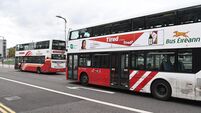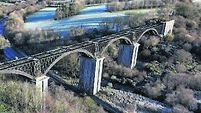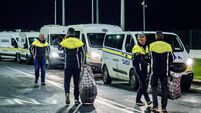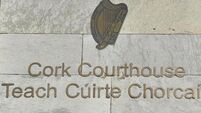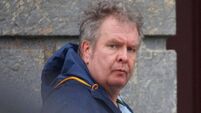Letters to the Editor: Scrap Cork BusConnects and build light rail on disused train lines

Letter-writer Dan JJ Kahn suggests a new link to Ringaskiddy port should be built, 'possibly via the existing Cork-Cobh line and via a tunnel or lifting bridge across Cork Harbour to Monkstown and thence to Ringaskiddy with a branch to Carrigaline'. Picture: Larry Cummins
The much-heralded BusConnects programme appears to be a welcome development but, despite the supposedly quick implementation of a bus improvement scheme in comparison to the still not started light rail network, BusConnects has little to show for itself apart from the newly announced land-grab at Tivoli Docks to build a €10m ‘temporary’ depot.

Eamonn Ryan must lay down the law now, in these and many other such cases of dubious road improvements by forcing road users to spare the fragile environment by backing the reopening of disused rail routes as routes for trains rather than pointless greenway footpaths, and accepting that rural roads can never be as wide or fast as the French Autoroute that a minority still dream of.
It would be better to keep existing rural roads better maintained in their current form, along with more stringent speed limits which would also serve to save many lives for years to come if people are encouraged to drive more slowly and thoughtfully. both for the sake of other road users and nature.
Dan JJ Kahn, Sheffield, England
In the present unfair education of religion in Irish Catholic-ethos schools, students aren’t allowed to speak up and disagree in class with those Catholic religious theories that are taught to them.
They are sadly also not allowed in the same classes either to ask if other religions have something important to contribute to their understanding of human behaviour and destiny.
Other established theories on the creation of mankind and the world are unfortunately not allowed in religion classes but in science classes other established on the same important subject are happily excepted and greatly encouraged.
But it is a very healthy thing, I believe, for all students to be educated as much as possible in a balanced way about the various already-established theories which attempt to explain the arrival of mankind on our planet whether these theories are religious theories or scientific theories. All these theories together would greatly aid, I believe, the understanding in student’s minds of what mankind’s ultimate destiny might actually be. Students should happily become more confident as to where they might themselves be going in the long run in this life or feel better about facing what might come in the next life.
I believe Christianity has something wonderful to say about the nature of mankind and where we are all going. From Jesus Christ we learn that humanity is one great family with God being the loving father of it all, and who we are destined to meet both in this life in other people and also, in another way, in the next life too. If other religions have similar theories (or other theories of great merit) concerning the nature and destiny of mankind then these other theories could also provide useful lessons for all young students of different faiths and none to learn from when they are taught them by experts from these religions.
The importance of going that extra mile to help even total strangers was a wonderful educational parable told by Jesus, to show how we all should endeavour to treat every single person in the world as belonging to one big, caring family which is the human race. Sadly and ironically, however, this wonderful theory of Jesus’ which is meant for everyone is not taught much outside the walls of most Christian Churches today.
Instead, many educated clerics who should know better usually only talk in the public media about the practical details of how their churches are run. They also spend too much valuable time talking at length about their own personal autobiographies rather than explaining through useful anecdotes and parables what the light of the gospel means. Perhaps others religions have a similar hopeful light like that which is found in the Gospel, and a type of light that which we all should humbly learn about too.


